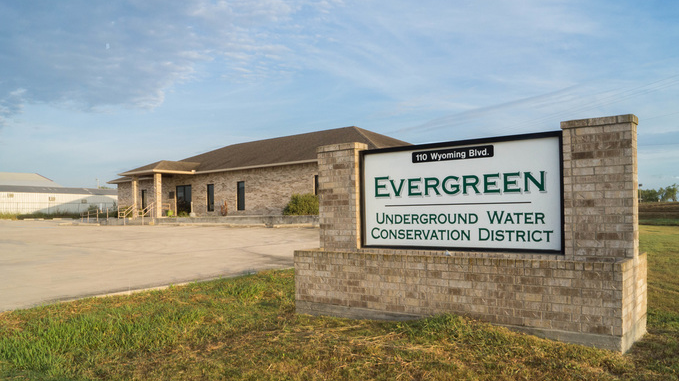District Overview
Aquifers in the Evergreen
Carrizo
The Carrizo (outcrop) spans across the Northern portions of Frio, Atascosa, and Wilson counties in the district. The aquifer is primarily composed of sand locally interbedded with gravel, silt, clay, and lignite. Although the Carrizo-Wilcox Aquifer reaches 3,000 feet in thickness, the freshwater saturated thickness of the sands averages 670 feet.
The Carrizo Aquifer (subcrop) refers to the portion of the aquifer that lies beneath younger geologic formations, extending downdip from the outcrop areas In the EUWCD, the subcrop portion of the aquifer is confined by overlying clay and silt layers, which limit direct recharge but help maintain artesian pressure. Groundwater in this portion of the aquifer moves slowly toward the Gulf Coast.
Wilcox
Edwards Aquifer
This aquifer is a significant regional water source, known for its high permeability and spring-fed systems. The EUWCD does manage the Edwards Aquifer outside of the Edwards Aquifer Authority jurisdiction.
Gulf Coast
Within the EUWCD, the Gulf Coast Aquifer is located in Karnes County, where it serves as a key water source. Composed of sand, silt, clay, and gravel, water quality varies, with higher salinity levels in some areas due to natural brine migration and groundwater pumping .
Queen City
Sparta
Yegua-Jackson
Other
Other groundwater bearing formations such as alluvial deposits, the Mount Selman, Weches, and Cook Mountain formations yield water for a limited number of wells within the Evergreen.


